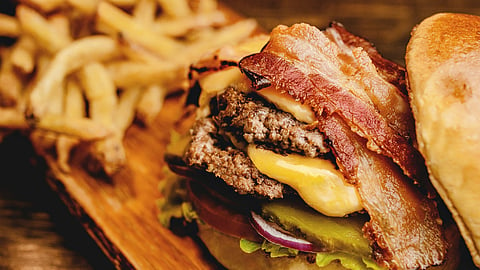

Diabetes remains a significant public health issue in India, affecting millions of people across the country. A 2023 study conducted by the Madras Diabetes Research Foundation and the Indian Council of Medical Research (ICMR) found that approximately 101 million Indians are living with diabetes, while an additional 136 million are in the pre-diabetic stage. This study revealed a much higher prevalence of diabetes compared to the earlier World Health Organization (WHO) estimate, which had placed the number of diabetics in India at 77 million.
Diabetes, a metabolic disorder that leads to elevated blood sugar levels, has various causes depending on its type. Type 1 diabetes is generally caused by genetic factors, while Type 2 diabetes is influenced by both genetics and lifestyle choices. A key contributor to Type 2 diabetes is a combination of factors such as poor diet, lack of exercise, and obesity.
A groundbreaking study has recently identified specific dietary choices as a leading factor behind India becoming the "diabetes capital" of the world. The study highlighted foods rich in advanced glycation end products (AGEs) as one of the main culprits. These foods include commonly consumed items like cakes, chips, cookies, crackers, fried foods, margarine, mayonnaise, and other ultra-processed products.
This study was the first clinical trial of its kind conducted in India. Researchers from several institutions, including the ICMR and the Madras Diabetes Research Foundation, contributed to the findings. The results were published in the International Journal of Food Sciences and Nutrition.
AGEs are harmful compounds formed when proteins or lipids are modified by carbohydrates containing an aldehyde group, known as aldose sugars. These compounds are reactive and can cause toxicity in the body. The study found that a high intake of AGE-rich foods leads to inflammation, a condition closely associated with the development of Type 2 diabetes.
The researchers listed several common foods high in AGEs, which are frequently consumed in India. These include:
Fried foods such as chips, fried chicken, samosas, and pakoras
Baked goods like cookies, cakes, and crackers
Processed foods, including ready-made meals, margarine, and mayonnaise
Animal-based foods cooked at high temperatures, such as grilled or roasted meats (e.g., bacon, beef, and poultry)
Roasted nuts, including dry nuts, roasted walnuts, and sunflower seeds
These items are staples in many Indian households, and their preparation often involves cooking methods that increase AGE levels. Frying, roasting, grilling, and baking are all known to elevate AGEs in food, while boiling and steaming keep these harmful compounds at lower levels.
The study emphasized the importance of a low-AGE diet in managing diabetes and related conditions. Foods low in AGEs, such as fruits, vegetables, whole grains, and low-fat dairy products, were recommended as part of a healthier diet. According to the research, individuals who follow a low-AGE diet, particularly those who are overweight or obese, can significantly reduce oxidative stress and lower their risk of developing Type 2 diabetes.
The researchers concluded that making dietary changes, particularly switching from AGE-rich foods to healthier alternatives, could help mitigate the growing burden of obesity-related diabetes in India. This dietary intervention offers a promising approach to reducing the prevalence of diabetes, especially given the high levels of consumption of AGE-rich foods across the country.
One notable aspect of the study was its focus on culture-specific foods commonly eaten in India. The researchers took into account the typical Indian diet when designing the study, ensuring that the findings would be relevant to the population. They also highlighted the need for public awareness campaigns to educate people about the dangers of AGE-rich foods and the benefits of switching to a diet that minimizes the risk of diabetes.
In conclusion, the study not only sheds light on the dietary factors contributing to India’s diabetes epidemic but also offers actionable solutions. By adopting cooking methods that reduce AGE levels, such as boiling and steaming, and by incorporating more fruits, vegetables, and whole grains into their diets, individuals can make significant strides in controlling blood sugar levels and preventing diabetes.
Reference :
1. Bai, Mookambika Ramya, Kuzhandaivelu Abirami, Rajagopal Gayathri, Srinivasan Vedantham, Shanmugam Shobana, Lakshmi Priya Nagarajan, Geetha Gunasekaran, et al. 2024. “Effect of Low vs High Dietary-Advanced Glycation End Products on Insulin-Sensitivity and Inflammatory- Markers among Overweight/Obese Asian-Indian Adults-A Randomised Controlled Trial.” International Journal of Food Sciences and Nutrition, October, 1–11. doi:10.1080/09637486.2024.2405121.
(Input from various sources)
(Rehash/Yash Kamble/MSM)
